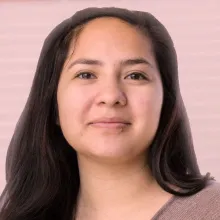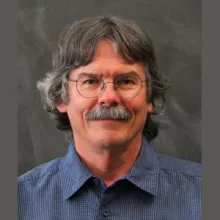January 4-10, 2024
Registration is now closed. Confirmations and Zoom links weill all be sent out by December 27.
Courses offered fall into one of the following categories:
Level 1: Little or no quantum or math
Level 2: Some UG quantum and math; or solid engineering background
Level 3: Upper division UG or beginning graduate quantum
Level 4: Graduate quantum
Lead Instructors:
Course Descriptions
Getting up to Speed on Quantum Networks: Modes, States, Transformations and Measurements (level 3)
Instructors: Saikat Guha and Michael Raymer
January 4, 2024 | 11AM EST
The learning goals of this course are to absorb the basic theory and concepts of quantum optics needed to understand how a quantum network works, emphasizing few-photon states as carriers of quantum information. Topics include Electromagnetic Modes and their Linear Transformations; Quantization, Single- and Two-photon States; Two-photon entangled states by spontaneous parametric down conversion; Bell-State measurements; distributing entanglement.
Information in a Photon (level 3)
Instructors: Tiju Cherian John & Jack Postlewaite
January 5, 2024 | 11AM EST
Beginning with a quick introduction to optical communication channels we discuss channel coding and modulation formats. Some basic optical receivers and their pairing with various modulation formats will be covered. In the second half of the course, we shall delve into the capacity of optical communication channels where we provide select formulae to characterize example optical channels. Finally, we examine the concept of super-additivity and its applications in deep space communications, with some discussion on channel noise.
Error Correction for Quantum Networks (level 3)
Instructors: Narayanan Rengaswamy, Michele Pacenti and Sijie Cheng
January 8, 2024 | 11AM EST
The short course will introduce the fundamentals of classical and quantum error correction using visual elements as well as necessary linear algebra. The course will start with the basics of classical error correction, linear block codes, parity-check matrices, syndrome, standard array decoding and finish the first part with a discussion of low-density parity-check (LDPC) codes and iterative decoders. Then the course will explain the basics of quantum error correction and draw comparisons to the concepts introduced for classical error correction. There will be discussions on the circuits that must be implemented to enable quantum error correction. The course will end with a discussion of how these error correction techniques bring advantages to quantum networks, e.g., enabling code-based entanglement distillation protocols in quantum repeaters.
Optical transmission systems for quantum networks (level 1-2)
Instructors: Dan Kilper and Shelbi Jenkins
January 9, 2024 | 11AM EST
This course is a 1-2 level introductory course aimed at teaching the fundamentals of optical networks and how we can integrate quantum systems with our current optical infrastructure. This course will be largely conceptual and focus on general concepts and applications so students will not be expected to know extensive quantum or math prior to this course.
Integrated Photonics Platforms for Quantum Networks (level 3)
Instructors: Marko Lončar and CJ Xin
January 10, 2024 | 11AM EST
This course offered provides a survey of the latest advances in several popular material platforms for integrated photonics with a focus on their relevance to the development of long-distance quantum networks. Platforms addressed in this course will include silicon, silicon nitride, aluminum nitride, lithium niobate, III-V semiconductors, etc. The course will highlight key performance metrics of components for photonic control that have been demonstrated on each platform. Additionally, the state of source and detector integration in each platform will also be addressed. Components of particular interest to quantum networking applications, such as single photon detectors and sources, will be discussed in detail. Time and interest permitting, instructors will discuss key existing challenges, such as material quality and fabrication limitations, for select platforms, and highlight opportunities for further development/work.
The Physics Behind the Quantum Internet: A Gentle Introduction (level 1-2)
Instructors: Michael Raymer and Amy Soudachanh
January 4, 2024 | 3PM EST
This course is a 1-2 level introduction to quantum physics and common applications of the quantum internet. Intended for beginners and using little or no math, this course covers the foundations of the quantum internet, from polarization states to qubits to quantum teleportation, and how we can begin to understand the key point without the use of mathematics.
Theory of quantum channels: from bosonic modes to single photons (level 4)
Instructors: Quntao Zhuang and Anthony Brady
January 5, 2024 | 3PM EST
The course aims to provide training for quantum network modeling, with the intent to understand basic quantum channel models for photon transmission and covering quantum information trans- mission in different degrees of freedom of photons. Essential topics in quantum information will also be surveyed. Participants will (i) learn the general description of a quantum channel (Kraus decomposition, isometric extensions etc.), (ii) be able to identify typical bosonic channels—e.g. phase-insensitive amplifier, attenuation, additive Gaussian noise—that are pertinent to fiber-optical and free-space communication and how these channels are related, (iii) learn how single-photon quantum states evolve under such channels, i.e. single-photon loss, and (iv) learn about specific photonic encodings, e.g. polarization and time-bin encodings.
Principles of Quantum Networks (level 2)
Instructors: Don Towsley and Matheus Guedes De Andrade
January 8, 2024 | 3PM EST
Quantum networks are complex systems formed by the interconnection of multiple components. Developing quantum networks that enable efficient quantum communication requires a holistic understanding of how systemic behavior emerges from the interconnection of these components. In this setting, this level 2 course provides an introductory overview of the fundamental principles that guide the development of quantum networks from a systems perspective. We will discuss quantum network architectures, explore the similarities and differences between classical and quantum networks, introduce resource allocation problems in quantum networks, and delve into quantum network tomography and management.
Exploring and Designing Quantum Networks via Digital Twin Simulations (level 2)
Instructors: Dirk Englund, Hyeongrak “Chuck” Choi and Prajit Dhara
January 9, 2024 | 3PM EST
The course aims to provide training for quantum network simulation and modeling, emphasizing starting from first principles to model elementary quantum links for realistic deployed quantum networks. Essential topics in quantum information and quantum optics will also be surveyed.
Quantum networking with path-entangled single-photon states (level 3)
Instructors: Krister Shalm (NIST) and Mike Mazurek (University of Colorado)
January 10, 2024 | 3PM EST
This course will give an overview of a quantum networking architecture based on all-optical technology for distributing path-entangled states of single photons. Topics covered will include: generation of heralded, pure, single-photon states with spontaneous parametric down conversion, single-photon detection with superconducting nanowire detectors, Bell-state measurements for path-encoded states, and all-optical quantum memories
Join our mailing list to receive notice when registration opens.


